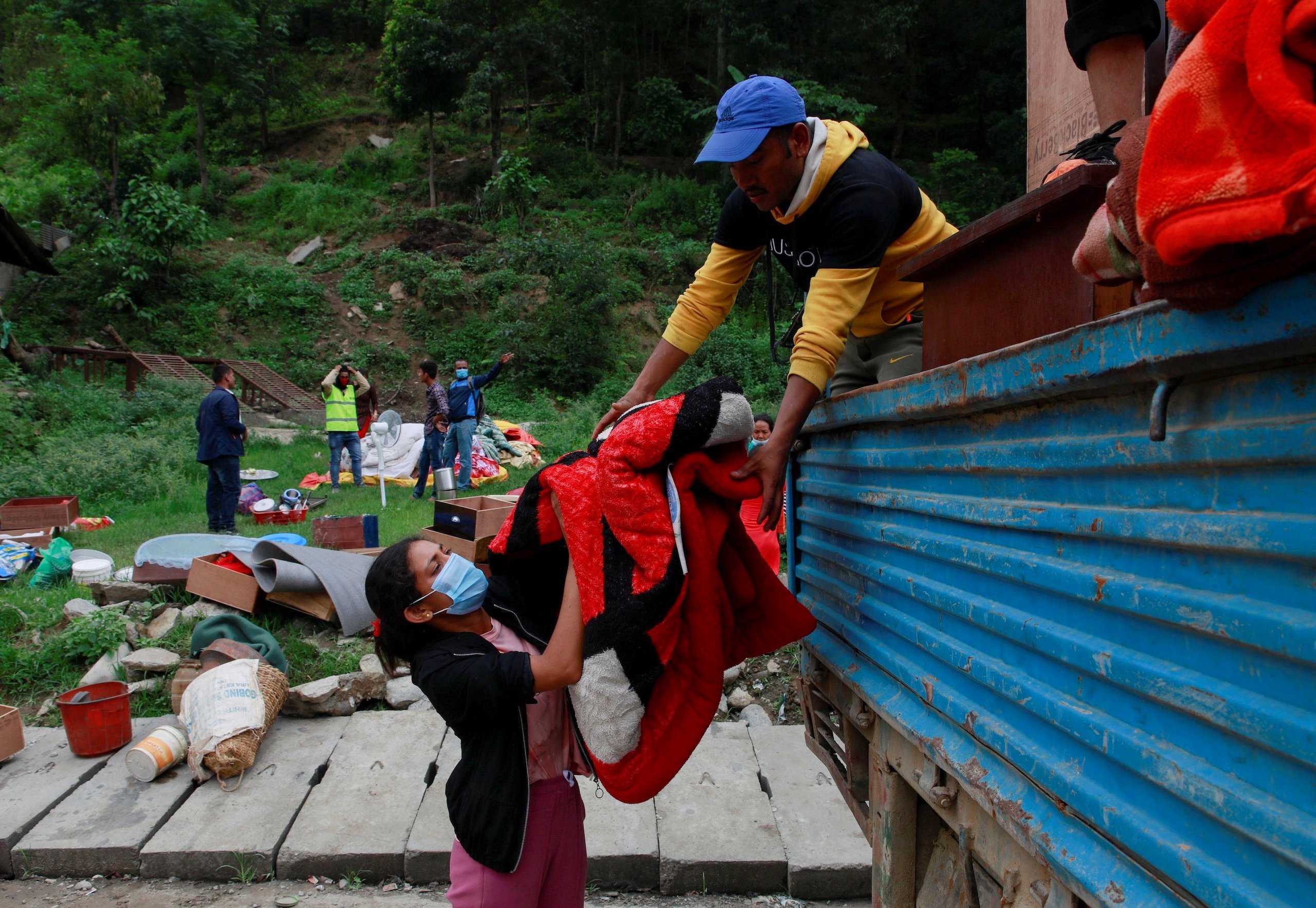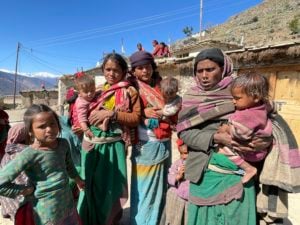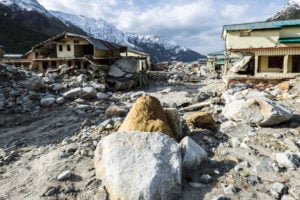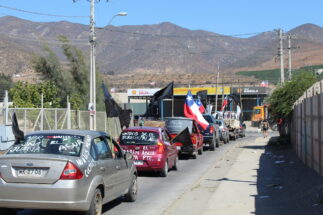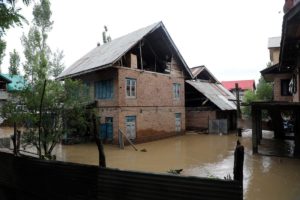In 2015, in the aftermath of a devastating earthquake, Nepal adopted a new Constitution and moved to a federal structure.
The Constitution gave local governments the “right” to deal with the impacts of climate change, which was placed within the ambit of disaster management. But another section of the Constitution states that disaster management is a common “right” of federal, provincial and local governments. This has created confusion and turf wars, weakening Nepal’s ability to deal with the impacts of climate change.
There is confusion over which policies, regulatory frameworks or planning guidelines to follow, as well as gaps in communication. A study published last month identified two projects that were affected by this; they took place in the last few years and aimed to improve adaptation to climate change. One was funded by the International Union for Conservation of Nature, the other by the UN Environment Programme. An official from the provincial ministry told the researchers that the projects were started by the federal government without coordination with provincial governments.
To make matters worse, this confusion is growing. At a workshop in May this year Rishi Raj Acharya, undersecretary at the Ministry of Federal Government and General Administration, said that the ministry has directed the country’s 753 local governments to integrate disaster management, including mitigating and adapting to climate change, under the Local Disaster and Climate Resilient Planning (LDCRP) framework. But Nepal already has a Local Adaptation Plans for Action (LAPA) national framework, which was updated in 2019. Local government officials are now wondering which framework to follow. There are overlaps between them, but also differences.
Yet another source of confusion surrounds the fact that LAPA designates local governments as the only governance units for dealing with climate issues. This clashes with the 2010 National Adaptation Programme of Action, which recognises the vital role of non-state actors such as community forest user groups, farmers’ groups and NGOs.
Finally, study after study has shown that local and even provincial governments lack the capacity to design and deliver projects.
Good intentions behind federal structure
When the federal structure was adopted by Nepal’s Constitution, the move raised hope that the country would be better prepared for the next disaster. The new Constitution mandated the creation of provincial and local governments to complement the central authority, each with legislative, executive and judicial functions. The popular slogan was ‘Gaun Gaunma Singha Durbar’ (‘Government in every village’).
The devolved governance structure showed its strength in Nepal’s response to the Covid-19 pandemic, despite some coordination and communication problems.
But it is not working well in disaster risk preparedness and climate action, whether that is implementing projects or channelling funds to where they are most needed.
Allocation problems with climate finance
In 2017, Nepal’s finance ministry published the Climate Change Financing Framework (CCFF) to help policymakers organise and allocate funding.
However, due to the lack of robust information on the climate relevance, risks and potential impacts of proposed programmes, local governments are struggling to allocate resources and finance appropriately.
In some cases, IT officers or other administrators have been designated as focal persons for disaster managementDharam Uprety, climate resilience specialist at Practical Action Nepal
This problem has been exacerbated by limited understanding of what constitutes a climate budget. Nepal’s climate change budget code, formulated in 2012, tracks budget allocation to climate-related plans and government programmes, and also categorises programmes as being highly relevant, relevant or neutral on climate. But mapping financing gaps, institutional accountability and budget allocation in the context of climate change has so far proven more challenging than other sectors, as it appears to be an issue that cuts across agriculture, food security, water, forestry and other sectors.
Compounding this, local governments lack expertise on climate budgets, according to Gita Kumari Dahal, deputy mayor of Bidur, a town 50 km from the capital Kathmandu. “We don’t know what the climate change budget code is and haven’t received any training so far on using it,” she said.
Dharam Uprety, a climate resilience specialist at non-profit Practical Action Nepal, said that while people and local authorities now care more about climate issues, policymakers at a central and local level are less motivated to take concrete steps.
He added that Nepal needs more practitioners who understand the technicalities and nuances of responding to climate change at a local level. Though the situation is slightly better in cities compared with smaller rural areas, the problem is getting the right person in the right place. “In some cases, in the absence of disaster or climate change experts, IT officers or other administrators [without specific expertise] have been designated as focal persons for disaster management,” Uprety said, “which is really unfortunate.”
The federal government response
Federal-level officials agree that integrated legal and policy measures are needed to combat climate-induced challenges at the local level. Radha Wagle, joint secretary for climate change at the environment ministry, said: “My division is working in liaison with federal ministries, provincial governments and municipalities to strengthen the capacities of sub-national governments to ensure that the National Climate Change Policy provisions are well integrated into their policies, plans and programmes.”
Wagle added that an integrated policy will result in improved functional coordination and reduce the problem of overlaps and communication breakdown, thereby helping the response to climate change.
Combating climate issues at a local level requires strong commitment, Wagle said, adding that local governments need to incorporate adaptation into their annual plans to help Nepal achieve its 2030 climate targets.
Local government view
Gita Banjara, deputy mayor of Panauti – a town around 35 km from Kathmandu – pointed out that the federal government has not allocated a separate budget under ‘climate change’. On its own initiative, she said, Panauti municipality has set aside a disaster management fund of 10 million Nepali rupees (around USD 78,000) and has established a local disaster management committee.
Disappointed with the federal government’s lack of understanding of Panauti’s environmental risks, Banjara said: “Our land is hilly where soil erosion is one of the major issues, but the federal government is completely unaware of this reality and doesn’t send budget for dealing with such problems.”
Dealing with climate change impacts goes beyond the jurisdiction of individual local governments
Gita Kumari Dahal, the deputy mayor of Bidur, said the municipality has incorporated climate change issues into its 2035 masterplan.
She also pointed out another complication: climate change impacts are not just local, which means dealing with them goes beyond the jurisdiction of individual local governments.
Nepal is already facing multiple impacts of climate change in the form of landslides, flash floods, glacial lake outburst floods, avalanches, worsened droughts and so on. The three tiers of the Nepali government need to work together to deal with these multiple crises. A necessary first step is coordination rather than contradiction within the policy landscape.
